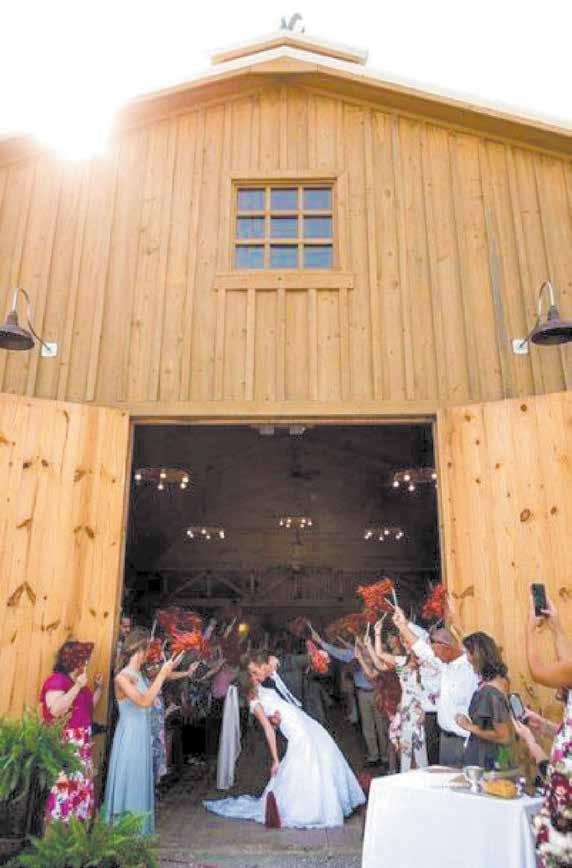July/August 2024
Vol. 14 Issue No. 4
RECOGNITION FOR ROCKY
Russellville lauds one man’s life of teaching and inspiring
CRAZY FOR COOKBOOKS
Level up your cooking game with these recommendations


July/August 2024
Vol. 14 Issue No. 4
Russellville lauds one man’s life of teaching and inspiring
Level up your cooking game with these recommendations


ach edition of Franklin Living is the culmination of hours of work by more than a dozen people who are dedicated to creating a product we’re proud of –and one we hope readers will enjoy.
This issue is no different.

From the cookbook suggestions –which take center stage in both Taste of Franklin as well as Recommended Reading – to the Extension advice, from Philip Goad’s Biblical words of wisdom and Emily May’s financial guidance to the special countians whose stories María Camp shares, every page of this magazine

Editorial
ALISON JAMES
MARÍA CAMP
Contributors
KATERNIA COLE COFFEY
PHILIP GOAD
EMILY MAYS AMY DOLAN MCCOLLUM LORI SKINNER
MORRIS
is dedicated to bringing you information you need to know – to instruct, to inform, to inspire, to entertain.
Let me be frank with you for a minute. It isn’t always easy. People are busy, and their schedules are tight. Timing is often the biggest challenge when it comes to making Franklin Living happen. When can we schedule this photo shoot? When can this interview take place? How can we accomplish this or that despite other obligations, other goals? How can we work around illnesses and vacations and family responsibilities to create something amazing?
And yet, time and again, it all comes together.
My point is, you don’t necessarily see the work that goes into putting this magazine into your hands every other month. So I just want to emphasize how much time and heart is poured into it, by everyone involved.
We don’t put in all this hard work just for ourselves. We do it for you. The finished publication is our gift to our readers.
If you have a suggestion for a Franklin Countian we should feature, or a topic about which you’d like to learn more, we are always open to hearing from you, so please reach out!
We do this because we love it.
We hope you love it too.
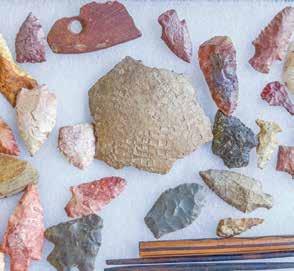

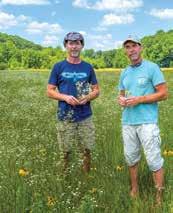
ON

Submit community events for future issues of Franklin Living to alison.james@franklincountytimes.com. Requests must be received by the first of the month for consideration for the next edition.
Submit community events for future issues of Franklin Living to alison.james@franklincountytimes.com. Requests must be received by the first of the month for consideration for the next edition.
Jan. 1 through Feb. 1
Jan. 29 through March 7

The Russellville Parks and Recreation Department will begin spring sports registration with soccer signups Jan. 1 through Feb. 1. Youth soccer is for boys and girls ages 3-12, and cost is $35. Teams will play their games at the soccer fields by the Chucky Mullins Center. Youth softball signup for girls ages 6-12 will begin Jan. 29 and continue through March 7, with a cost of $35. For more information call 256-332-8870, ext. 14.
July 20

July 27
Teams will play at Red Bay in this annual competition among county teams.
The 33rd Annual Vina Rescue Squad July Fest will be held at Vina Fire Department July 27 from 10 a.m. to 9 p.m. Tickets for the Draw Down are on sale now, 325 tickets at $100 apiece, with the drawing for the $17K prize beginning at 5:30 p.m. There will be a car show from 10 a.m. to 1 p.m., and there will be food, crafts and live music all day. Fireworks will be at 9 p.m. To find out more about being a vendor – $20 for a 12x12 spot – call Denise Rogers at 256-460-1539; Kyle Green at 256-7402815; or Vina Town Hall, 256-356-4996.
Jan. 20-26
The Weigh-In Week for teams participating in Scale Back Alabama will be Jan. 20-26, kicking
Jan. 11 and Feb. 8
The second Saturday night of each month at 7 p.m. is the monthly Kerry Gilbert Band concert at the Historic Roxy Theatre in Russellville. The KGB will be joined by a special guest for
The annual Franklin County Watermelon Festival Pageant will crown the 2024 Watermelon Queen and younger queens, too, as the reigning royalty of this year’s festival. The pageant will be held at the Russellville City Schools Auditorium, starting at 10 a.m., July 20. With entry categories for ages birth through 21 years old, the pageant provides the opportunity for local young ladies to draw accolades for qualities like prettiest smile, prettiest hair and prettiest dress. The Watermelon Queen, from the 18-21 division, will cut the Opening Ceremony watermelon and award watermelon contest prizes at the Watermelon Festival in August. She will also ride in the Russellville Christmas parade. Note: Registration was due in June.
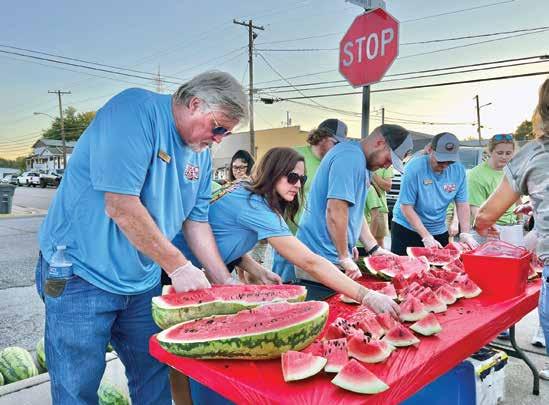
first challenge in 2007, Alabamians have lost more than 1 million pounds. For more information, to sign up or to find a local weigh-in site, visit www.scalebackalabama.com.
Aug. 16-17
Jan. 22 and Feb. 1
The two-day Franklin County Watermelon Festival, hosted by the Chamber of Commerce, boasts non-stop musical entertainment, watermelon contests, the presentation of the Watermelon Queen, arts and crafts vendors, an antique car and truck show, free wedges of juicy watermelon, youth performances, themed festival T-shirts for sale and more in downtown Russellville.
The LifeSouth bloodmobile will be in Russellville Jan. 22 at IHP and Feb. 1 at Cricket Wireless. The bloodmobile will be at IHP from 9 a.m. to 4 p.m. and at
Whether it be an optimistic, forwardlooking internet post, or perhaps a greeting card, most church-going people are familiar with the words in Jeremiah 29:11: “For I know the plans I have for you,” says the LORD. “They are plans for good and not for disaster, to give you a future and a hope.”
Beautiful sounding words? Absolutely! Yet too often, this message from God to his chosen people who are in Babylonian exile is pulled out of context. These inspired words still hold value for Christians today, but we must understand them in the context.

Jeremiah’s inspired letter, recorded in Jeremiah 29:4-23, might be best understood as a reality check for those who had been exiled away to Babylon. First, it erased the false hope being promoted by false prophets of the day. Further, it revealed the exiles would be in Babylon for 70 years, rather than the two years being promised by the false prophets. Jeremiah’s letter explained the core problem: God’s people hadn’t listened to him. It did include some good news, though: God would eventually bring his exiled people home.
While some folks have incorrectly attempted to apply Jeremiah 29:11 to their personal day-to-day concerns, this reality

check from Jeremiah should serve to remind us of some valuable truths for today. First, God is still working his plan to provide salvation to and protect those who belong to his Son (1 Peter 1:35). He still listens to us when we pray (James 5:16), and He still wants people to seek him wholeheartedly (Acts 17:27)! Ultimately, He is still planning to bring his spiritual family home to where He is (1 Peter 1:13).
Does God care about the things going on in our daily lives? A reading of the Sermon on the Mount in Matthew 5-7 would certainly seem to indicate so. Further, James invites Christians to always remember that every good and perfect gift is ultimately from God (James 1:17). Always remember though, regardless of any current positive or negative physical circumstance, the spiritual future and hope we need most is found only in Jesus. Do you belong to Jesus today? Have you humbled yourself in obedience to him? If not, why not? Your eternal future depends on the choice you make!



Recipes by AMY DOLAN MCCOLLUM
Yay, it’s sweet summertime! Summer is the one season I look forward to the most. Even though the weather is hot, I love everything summer brings with it. School is out, which means I have more time with my kids and grandchildren, swimming, grilling – and a chance to travel and explore this great country.
I began teaching home economics in 1994. I always entered my students in activities and competitions that would offer them the opportunity to travel and see places they had never been. Luckily for me, most of the trips were an adventure for me as well.
My first “big” trip was in July 1997, flying with three students and a parent to San Diego, California. We attended the national FCCLA convention and competition for one of my students to compete in the job interview event. Her name was Misty Romine, and I taught her at Haleyville High School. Misty and her mom ended up being lifelong friends of mine.
This trip started the beginning of my “Traveling Cookbook Collection” – or maybe it could be called an obsession. They bought me the book “Savoring San Diego,” and they all signed it and wrote a sweet note in it. I now buy cookbooks from anywhere I travel.
The next big trip I had the opportunity to go on was the senior class trip to Maryland, Monticello, Virginia, Washington DC and New York City. It was my first time to visit each, and I acquired several new cookbooks.
I always discover favorite recipes in each book – and now I am going to share some of them with you.
In future I plan to share cookbooks and recipes from other trips – to the Coca-Cola museum in Atlanta, to Rippavilla Planation with a Franklin County Schools gifted class, to Dollywood in Tennessee. Check back in an upcoming issue for all this goodness!
On a personal note: As I am working on this article, I am getting ready to leave to vacation with my family in Orlando to visit Mickey and Minnie. The first time I went I was 47. You are never too old to travel somewhere new. I hope you enjoy reading these recipes and try them at home – or better yet, plan a trip. You will make some memories that will last a lifetime.

Note: I leave out the scallops and double the shrimp instead. I also add two large green peppers and two large red peppers, cubed.
• 3/4 pound firm white fish (seabass, halibut, snapper or swordfish)
• 8 raw jumbo shrimp, shelled, rinsed and deveined
• 8 large sea scallops, rinsed and patted dry
• 1/4 cup extra virgin olive oil
• 1/4 cup freshly squeezed lemon juice
• 3 tablespoons fresh minced cilantro (you may sub fresh parsley)
• 2 crushed garlic cloves
• 1 teaspoon paprika
• 1 teaspoon salt
• 1/2 teaspoon cumin
• 1/4 teaspoon turmeric
• 1/4 teaspoon cayenne pepper
• Sliced lemon wedges
• Chopped cilantro for garnish (if desired)
Instructions
1. Cut the fish into 1 1/2-inch chunks for skewering.
2. In a small bowl, whisk together olive oil, lemon juice, cilantro, crushed garlic, paprika, salt, cumin, turmeric and cayenne pepper.
3. Place fish, scallops and shrimp in a glass dish. Pour marinade over the meat and stir to coat.
4. Cover with plastic wrap. Place in the refrigerator and let it marinate for 30 minutes.
5. If using wood skewers, soak them in water while the fish is marinating. This will keep them from burning on the grill.
6. Preheat your grill.
7. Skewer the meat and the peppers chunks, evenly divided between four wooden skewers.
8. Generously grease the grill.
9. Place the skewers on the grill and cook for about 10 minutes total, turning once during cooking, until the edges are browned and the meat is cooked through. A bit of the fish might stick to the grill; the less you turn them, the less this will happen.
10. Serve the skewers on a bed of rice.

Ingredients
• 16 ounces large elbow macaroni
• 3 cups milk
• 2 teaspoons all-purpose flour
• 1/2 teaspoon salt
• 1/4 teaspoon freshly ground black pepper
• 2 cups (packed) freshly shredded Parmesan

• 2 cups (packed) grated mozzarella
• 2 cups (packed) Romano cheese
• 2 tablespoons butter
Instructions
1. Preheat the oven to 450 degrees.
2. Butter a 13-by-9-inch glass baking dish and set aside.
3. In a large pot of boiling water, cook the noodles until tender, about 8-10 mi nutes. Drain, but do not rinse.
4. In a large bowl, whisk the milk, flour, salt and pepper until blended.
5. Stir in 1 1/2 cup Parmesan, 1 1/2 cup moz zarella and 1 1/2 cup Romano cheese.
6. Add the noodles and butter and toss to coat.
7. Transfer the noodle mixture to the prepared baking dish. Sprinkle the remaining Parmesan, mozzarella and Romano cheese over the noodle mixture.
8. Bake until the cheese begins to lightly brown on top, about 12-14 minutes.
9. Let stand for 10 minutes, then season with salt and pepper to taste and enjoy!






Ingredients
• 1 1/2 teaspoon cracked black pepper
• 1 teaspoon thyme
• 1/4 teaspoon onion powder
• 1/4 teaspoon garlic powder
• 1/4 teaspoon cayenne pepper
• 1 pound lean boneless sirloin steak
• Cooking spray

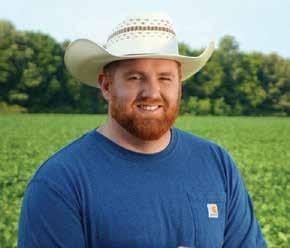



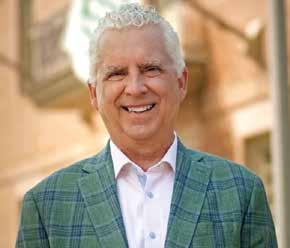

Instructions
1. Combine all the spices in a small bowl and stir well.
2. Trim all the fat from steak and press both sides of the steak with the pepper mixture.
3. Place the steak on a rack coated with cooking spray; place the rack in a shallow roasting pan.
4. Broil 5 inches from heat for 4 minutes on each side until the desired degree of doneness.
5. Cut the steak diagonally across the grain into half-inch thick slices.
pepper and a dash of tabasco sauce, shaken together in a vinaigrette bottle and refrigerated one hour
Instructions
1. In a large serving bowl, add lettuces, onion and celery. Toss. Refrigerate.
2. In a small skillet over low heat, stir almonds in sugar until lightly toasted. Cool.
3. Toss dressing with salad greens.
4. Add or top with almonds and mandarin oranges.

Ingredients
dients. Toss with chicken mixture.
4. Chill.
5. Fold in nuts.
6. Serve in Cranberry Ring (recipe follows) garnished with reserved peach slices.
Ingredients
• Two 3-ounce packages of lemon gelatin
• 1/4 teaspoon salt
• 2 cups orange juice
• 1 cup water
• 1 16-ounce can whole cranberry sauce

3 medium peaches, peeled and sliced about 1 1/2 cups
• 3 cups of cubed cooked chicken
• 1 head iceburg lettuce – rinsed, dried and chopped
• 1/2 head romaine lettuce – rinsed, dried and chopped
• 16-ounce can mandarin oranges, drained
• 6 green onions, thinly sliced
• 2 cups chopped celery
• 1/4 cup granulated sugar
• 1/2 cup slivered almonds
• Dressing: 1/2 cup extra-virgin olive oil, 1/4 cup red wine vinegar, 1/4 cup granulated sugar, 2 tablespoons fresh minced parsley, 1 teaspoon salt, freshly-ground black
• 1 cup of diced celery
• 1/2 teaspoon of salt
• 1/2 cup of mayonnaise
• 2 tablespoons of salad oil
• 1 tablespoon of vinegar
• 1/4 cup toasted pecan pieces
Instructions
1. Reserve a few of the peach slices for garnish.
2. In a large bowl, combine diced peaches, chicken and celery.
3. Blend together the next four ingre -
Instructions
Mix gelatin, salt, water and 1 cup orange juice until dissolved. Heat to boiling.
Stir in 1 cup cold orange juice and chill until partially set.
Stir in cranberry sauce.
Pour into 6 1/2 cup ring mold and chill until firm.
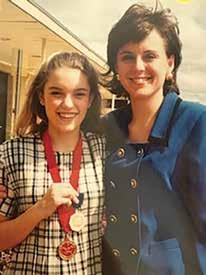
This article is dedicated to my beloved friend, Misty Elizabeth Romine, who passed away Jan. 17, 2006, at the age of 23 following complications from heart surgery. She loved to eat and travel, and I sure do miss her. Thanks Misty and Beth McAlpine, her mother, for starting my cookbook collection and love for travel.

Story by MARÍA CAMP
by MARÍA CAMP and CONTRIBUTED

“We were raised on a farm, and when you wake up to the sound of wild turkeys gobbling and watch white-tailed bucks bound across the mountain chasing a doe, and you live with the sunrises and the sunsets, you learn a deep love for God’s creation, and it’s something you can’t really turn loose of because it becomes part of your heart.”
So says Joel Pounders who, along with his brother Jeff Pounders, both Russellville

natives, manages around 560 acres of land in Spruce Pine, known as Little Bear Valley by locals. Both retired, the brothers’ primary focus now is on forestry and wildlife management for the land they and their families have worked over the course of 30 years to purchase.
“We grew up farming with our family,” Joel explained. “We are at least third-, if not fourth-, generation farmers. I was an environmental manager, and Jeff worked in professional agriculture. Our wives were
schoolteachers, and we worked regular jobs like anyone else all our lives, albeit in the environmental/agriculture arena. We didn’t inherit the land. We bought it.”
Jeff explained one way they manage the land is by setting aside certain parts of it that won’t be farmed and particular areas that won’t have roads or logging. “And in areas where we manage, say, timber pro -
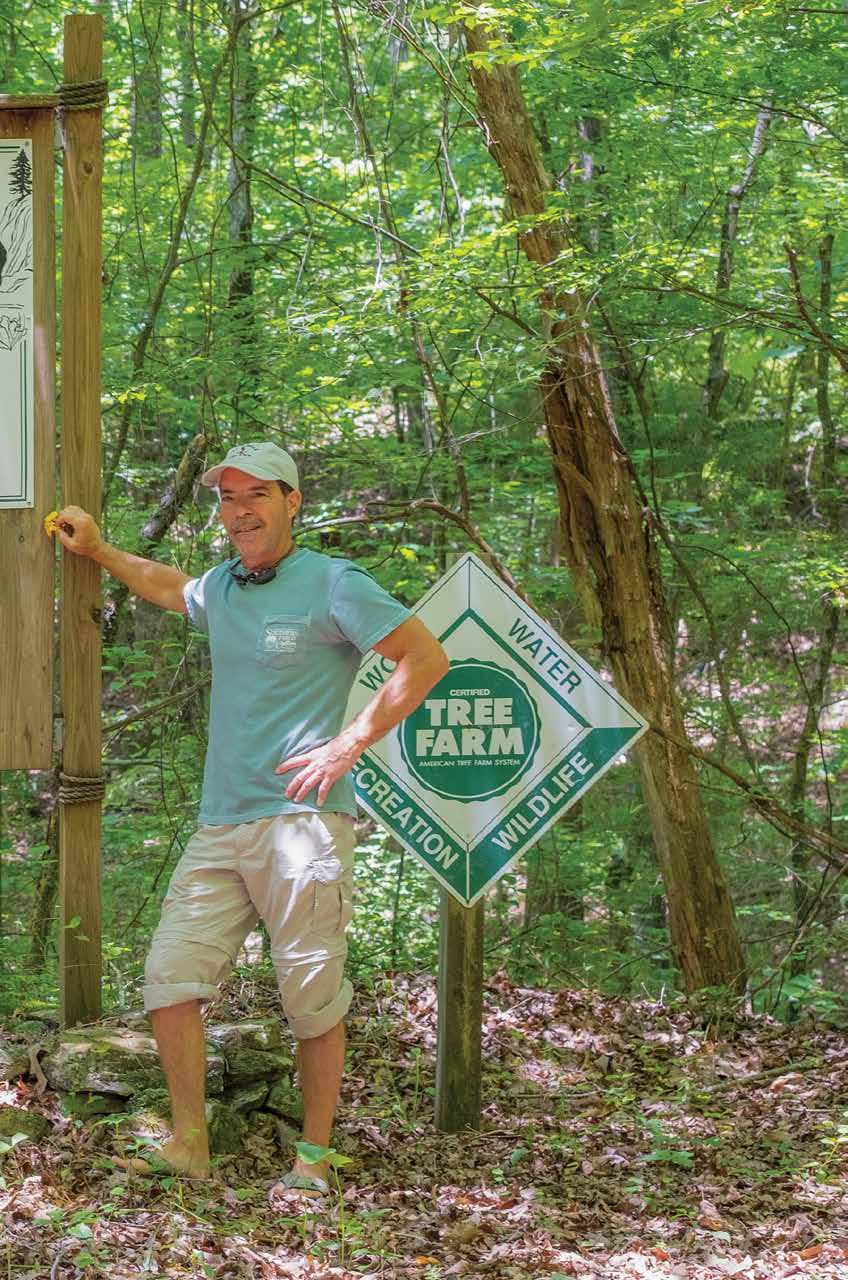
duction, because we all have to have a way of making an income, we still try to do it in a way that increases biodiversity rather than decrease it,” he explained.
“A good example is the prescribed fires, also known as controlled burns, that we do,” he added. “Fires used to be a natural part of our ecosystems, like with lightning-induced fires. These fires would burn naturally across the landscape and help create unique biomes.” Joel said people got so good at preventing fires

that some of those biomes that were accustomed to periodic fires suffered as a result, affecting the plants and animals that lived there, including red cockaded woodpeckers, gopher tortoises and indigo snakes – examples from south Alabama.
“Even in north Alabama, fire was a part of our natural ecosystem,” Jeff noted. “Native Americans used fire to reduce fuel loads because if you have increased fuel loads, the fires become much more damaging to the landscape, whereas periodic
fires prevent excess fuel loads and play a big part in the symbiotic relationships of species.
“Your plant diversity is also greatly increased with the presence of periodic fires,” Jeff added. “There are so many species of insects and animals and aquatic fishes and organisms that share in symbiotic relationships in the environment.”
Diversity is crucial to thriving ecosystems. For example, Joel said certain mushrooms in the forest are dependent on particular species of trees’ mycelium, wood web underground vines around certain species of trees. “Quite often in forestry, you want to have a diverse number of trees because you then find diversity in mushrooms and insects. The Luna Moth, for example – there’s only a handful of trees they will feed on and lay their eggs on. If you convert your forest to one species,” he continued, “for instance, all pine, then don’t expect to see a lot of Luna Moths or a lot of mushrooms. Those symbiotic relationships are critical in land management, and we try to look at all of that in deciding how we manage the land.”
He said it’s important to understand biomes, also known as microclimates. “You may be standing in one single forest in northwest Alabama, but you might find a hemlock biome 200 feet down in Little Bear Valley facing a north-facing canyon that gets very little sunlight and has high humidity,” he explained. “Air temperature is cooler there usually by 5-8 degrees versus surrounding areas.”
Jeff said within microclimates, it’s usual to find unique species living there. “Mankind has a way of wanting to clean up the landscape, so to speak, and create monocultures, which reduce biodiversity,” he explained. “A good example of a monoculture is loblolly pines, which is one that is created oftentimes in forestry management. Prescribed fires increase biodiversity and improve wildlife habitat.”
The brothers said they generally do prescribed fires once every two or three years to essentially mimic what used to occur naturally. “In doing so, you improve nesting and brooding habitat for birds like turkey, quail and many of the songbird species when working on a two-to-three-
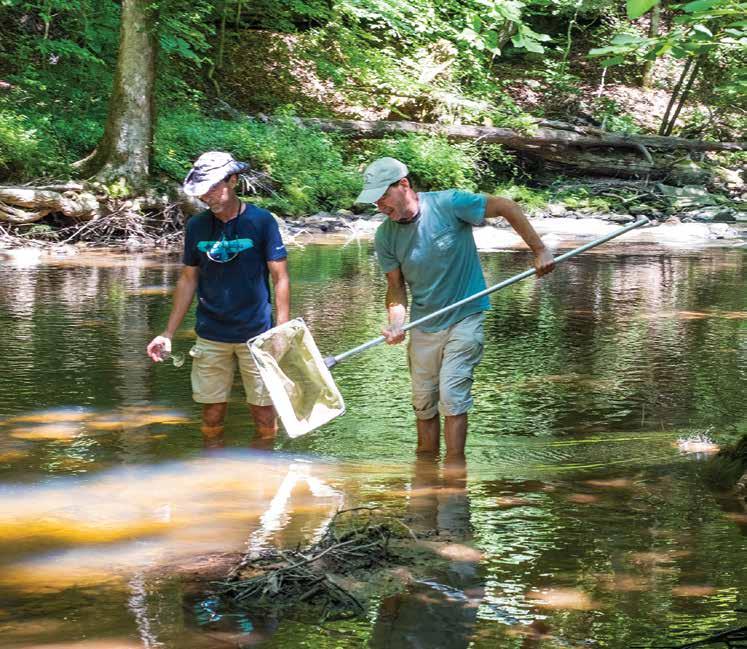
It begins with an appreciation for wild things and a heart for preserving them.
year rotation for prescribed burns,” Joel added. “We both studied environmental biology, attending Northwest Shoals Community College and the University of North Alabama. We both worked professionally for a major agricultural company in the environmental arena for most of our careers – but we’ve always maintained the farm and forestry and wildlife work through those same years as a sideline job or hobby just for the love of the land and the love of nature.”
Jeff said on their land they have “some of the more prevalent species that everybody’s familiar with,” including white-tailed deer, turkey, bobcats, coyotes, foxes, bald eagles, river otters and golden eagles, adding they also have “some unique species.”
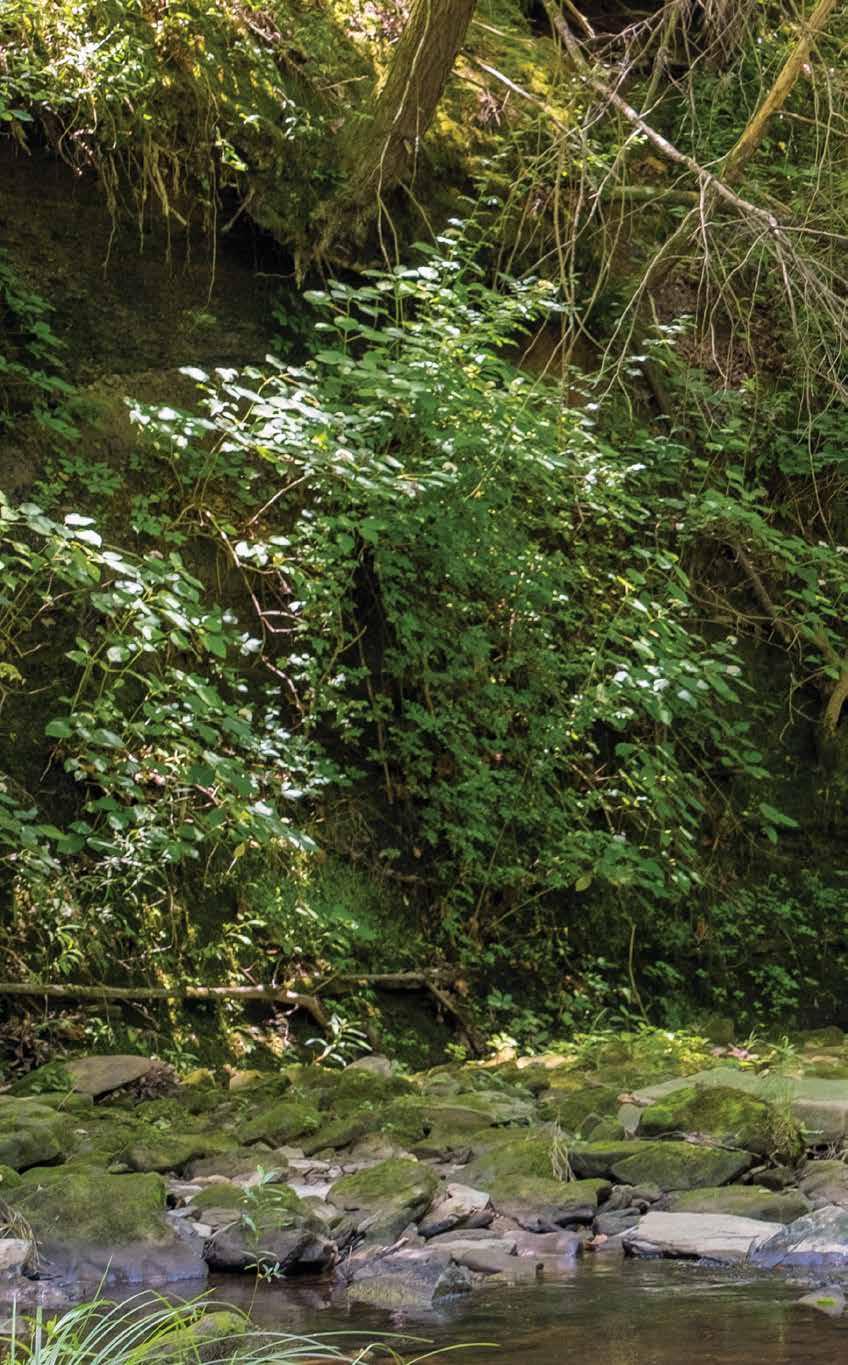
“The hemlock is under national stress,” explained Joel, “because of the hemlock woolly adelgid insect … but hopefully those down in these most southern parts will survive that.”
He said the hemlock has to do with how Spruce Pine came to have its name.
“The early colonizers that came to these parts recognized the tree as unique and different. It looked like a cross between a spruce and a pine, hence they called it the Spruce Pine, and that’s where the community of Spruce Pine originally was started – here in the valley. It migrated up and out to the current day Spruce Pine, but it was named after that tree, the Spruce Pine,

which is actually the Eastern Hemlock. The original town of Spruce Pine was started on the banks of Little Bear.”
Joel noted most of the diseases or fungus or beetle-induced sicknesses in trees come from invasive species from other countries. “That is a current challenge in forestry and biodiversity management,” he continued, “battling against
invasive species brought over from other places.”
Jeff said the hemlock is not the only threatened tree species, also citing ash and elm, threatened by disease or parasites.
On a recent trip through their land, the brothers took time to appreciate the biodiversity of a creek on the property,
catching and admiring tiny fish called darters. Unlike most fish, they don’t have swim bladders and are thus incapable of swimming. Instead of swimming, they stay along the bottom of creeks, periodically darting or scooting from one place to the next.
“In the state of Alabama, there’s quite a number of darters that are unique,” Joel
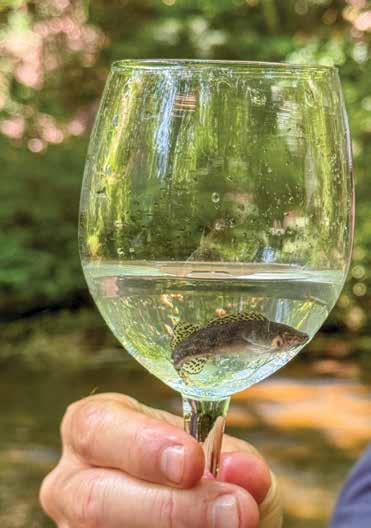
said. “They’re too small to be caught on a hook. We catch them in nets and scoop them up in a wine glass so we can see them better. Darters are good species indicators of biodiversity as they require clean, pristine streams and very low levels of pollution. Quite often, they’re some of the first fishes lost in areas that are heavily developed.
“When we alter habitats, we lose these little unique species, but they’re prolific here,” he added. “It’ll change your life to hold one in your hands and see it. It’ll change your opinion of what you think of taking care of streams and how important they are.”
“One of our greatest ecological disasters when considered by most ecologists,” explained Jeff, “is the loss of the American Chestnut tree. Now we can only imagine what our landscapes must have looked like with the American Chestnut. It was a massive tree, towering and stately, and it provided billions of pounds of tonnage of food for wildlife and humans. Some were so big that families could camp in the base of the hollows, and they would rival the Sequoia.
“And now all we have left is the remnant root stock and a few trees that have miraculously survived that are relatively very small, only about 10-15 inches in diameter, in just a few select states. Our

work is to try to prevent those kinds of things from happening again.”
He added they also feel the responsibility of preserving the cultural history of their lands, including “not only the early colonization of our lands, but the pre-history and the Native American indigenous cultures that occupied our lands,” which he said includes on their farm, where they have “a rich pre-history,” adding he and

his brother have found and documented “numerous cultures dating back to as early as the Dalton cultures (transitional Paleo).”
Jeff said they’ve “documented many archaic cultures, like the Kirk cultures and the Pickwick cultures, and within the Woodland period, numerous Cotaco culture, Flint Creek and Little Bear Creek cultures, after which the valley was named.” Others he noted include the Mississippian period, as well as the Madison and Hamilton Native Americans who occupied the lands.

“We’ve found artifacts from where the first settlers came here, and we believe that Andrew Jackson and Major William Russell, for whom Russellville was named, traveled through there after leaving Russellville and going to New Orleans for the Battle of 1814. We found a stone here that’s carved 1814 Josh Hill in this valley. So, there’s good reason to believe Andrew Jackson and his men passed through this valley en route to the Battle of New Orleans in 1814. It’s very important that we preserve not only the natural history and our native species but

also the pre-history and the cultures that came before us occupying this valley.”
Joel Pounders said they read a book early in their journey, “A Sand County Almanac” by Aldo Leopold, that has been an inspiration for them. “He was considered the father of conservation, and he foresaw several decades ago many of the challenges that we face today.”
Jeff said he and his brother believe “first and foremost” in the Bible as God’s word. “Secondly, there’s much literature out there that you can study and read, and there are others that came after Aldo

Leopold,” he added. “Many of the principles and concepts and the things he foresaw still influence us today, things like the loss of biodiversity, and this begins with having a land ethic, something he taught, and that’s what we still need within our cultures and our communities. “It begins with an appreciation for wild things and a heart for preserving them.”
“I think it was Henry David Thoreau that wrote, ‘In wilderness is the salvation of the world,’” said Joel. “He was speaking in a biological context rather than spiritual – a lesson on biodiversity. What he was saying there is the overall health of the human being and human populations is strongly linked, if not entirely linked, to the health of the ecosystem. When we fragment it and modify it like we do, ultimately it may end up in losses of certain species. A few at first may not seem that significant, but it can become a domino effect where you start losing more and more.”
He said some biologists are concerned that the present time may be a period of “possible mass extinction,” noting “there will be consequences for all of us.”
“Jeff and I, we love to promote conservation and wellbeing of wildlife,” explained Joel, “but we also recognize the value of wildlife in terms of a food source and for recreation and fun. Part of being
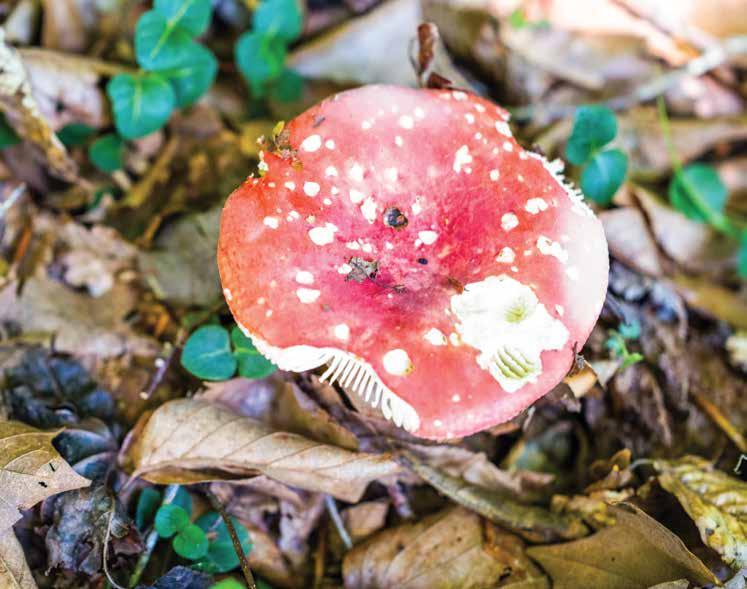
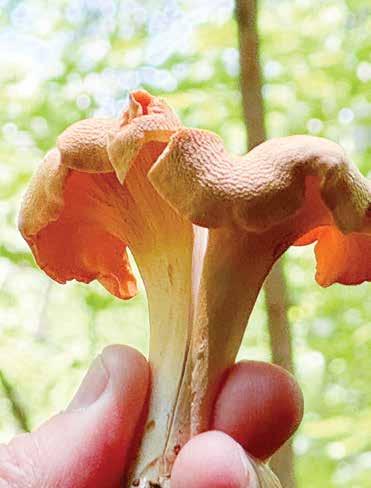

We believe in creating a love and appreciation with others for the things that are natural, wild and free.
a good land manager is recognizing that hunting is OK. It is good to harvest certain numbers of species that you have, and so we enjoy a deer hunt and a turkey hunt as much as anyone – but you know, maybe the general public thinks of us old hunters as just killers. Hopefully, people learn from us that we love the animals we hunt, and we not only love the game animals, but we also do a lot of work for non-game animals.”
Joel said they never hunt a river otter or shoot a bobcat on their land or hunt cockaded woodpeckers. “And I could name numerous species, but we do a lot
of work for the non-game species strictly for the enjoyment of having them and ensuring that we have that biodiverse landscape here on our property. Hunters are really more about giving life than we are taking it. Conservation figures a lot more prominently than people realize.”
“The future of wildlife and wild land is in the hands of the private landowner for the most part,” Jeff added. “We love working with the land, sharing it with others, and we feel passionate about it. We believe in creating a love and appreciation with others for the things that are natural, wild and free.”
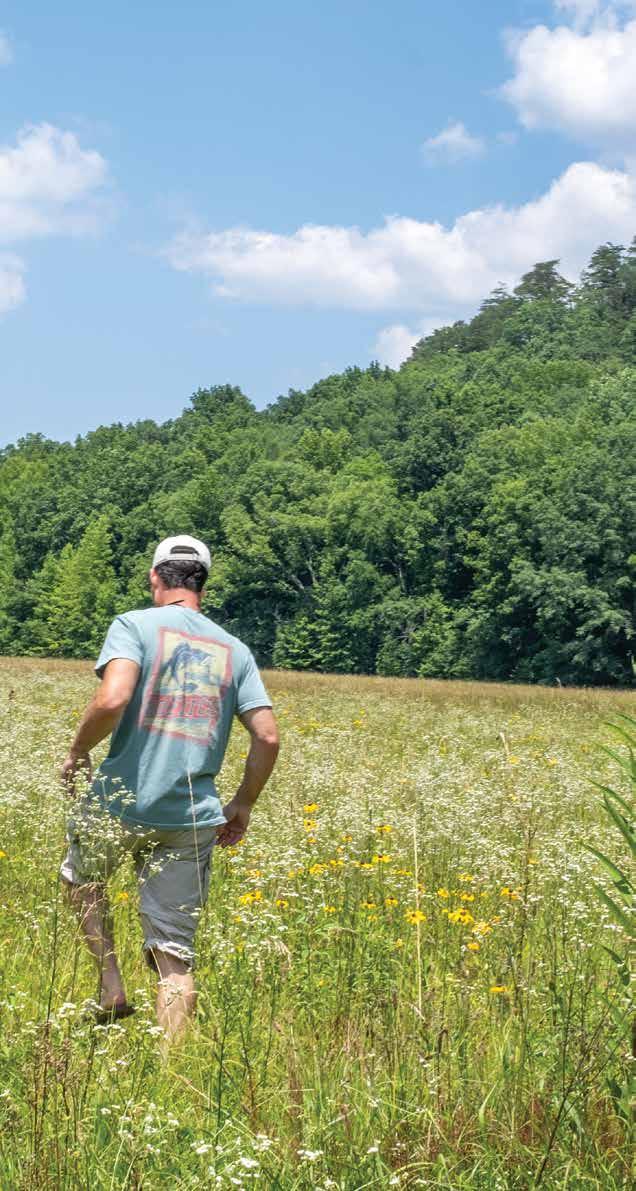
Joel echoed his brother’s sentiments, adding, “In the end, we really never truly own land. It all belongs to God. It’s his creation. We’re just temporary caretakers, and so Jeff made a good point, that we want to leave it in as good of shape or better than when we first obtained it, and we’re endowed with the ability and the blessing to take care of it for a while.”
“Joel and I, first and foremost, always like to glorify God with the things that we do, our Creator of all these things,” Jeff agreed. “Then we do our very best to try to inform and educate and create a land ethic and a love for natural things, wild and free, that God created – and to teach the young and even older people to love and appreciate these things and that we have a responsibility to preserve it as best we can and pass it on better than we found it, and this includes the plants and the animals.”





In today’s interconnected world, it is crucial to stay cyber safe and secure. As we increasingly manage our finances online, we must protect our digital assets from cyber threats. Here’s how to navigate this landscape safely.
First, cyber threats come in various forms, including phishing, malware and identity theft. Phishing attacks trick individuals into providing sensitive information, often through fake emails or websites. Malware, or malicious software, can infect devices, stealing data or encrypting files for ransom. Identity theft occurs when someone illegally uses your personal information to commit fraud.
How do we strengthen our digital defenses?

1 Use strong, unique passwords: A strong password is your first line of defense. Use a mix of letters, numbers and symbols. Avoid using easily guessed information like birthdays or common words. Consider a password manager to keep track of complex passwords.
2 Enable two-factor authentication: This adds an extra layer of security. Even if a hacker obtains your password, they’ll need a second form of verification, such as a code sent to your phone, to access your account.

3
Be wary of phishing scams: Always doublecheck the sender’s email address and look for signs of phishing, such as spelling errors or urgent requests for personal information. Never click on links or download attachments from unknown sources. Think before you click!
4
Secure your devices: Install reputable antivirus software and keep your operating system and applications up to date. Regular updates patch security vulnerabilities that cybercriminals exploit.
5
Use secure networks: Avoid conducting financial transactions over public Wi-Fi. If necessary, use a virtual private network (VPN) to encrypt your connection. Take all these precautions a step further with good financial habits. Be sure to monitor your accounts regular, educate yourself about cyber scams and protective measures, and always back up your important data.
Emily Mays is vice president/chief administrative officer at Community Spirit Bank in Red Bay, working in finance for 15 years. She is an enthusiastic social media marketer, financial literacy advocate and go-local supporter.



‘SOMEBODY YOU CAN ALWAYS DEPEND ON’
Rocky Stone’s 80 years represent lifetime of teaching and inspiring

In his 80 trips around the sun, Rocky Stone, originally of Selma, has accumulated a varied assortment of interests, friends and memories, maintaining a strong curiosity and zest for life along the way. A longtime Russellville resident, the retired Russellville City Schools teacher and principal has a long history of local involvement; from connections with the Boy Scouts, to forays into astronomy and computers, hiking and camping, his interests have been varied and many.
The night before his 80th birthday, Rocky and his wife, Ginger Stone, were among those to witness the Northern Lights from the comfort of home. The next day, May 11, they and more than 200
friends celebrated Rocky’s four decades of life with a party at Elliott Branch campground on Little Bear Reservoir, part of the Bear Creek Lakes, in Hodges.
Three on a String, a band including his fraternity brother Andy Meginniss, played at the party, even writing a song for the occasion. “He’s a dear, dear friend,” Meginniss said. “He is a brother of mine, and I’ll always consider him that.”
The cake commemorated “Rocky Stone’s 80th Trip Around the Sun.” The bottom layer represented his garden, and the second layer was decorated like the Boundary Waters Canoe Area along the Canadian border – both big parts of his life. The top layer portrayed the night sky, a nod to Stone’s involvement with astronomy and

the Shoals Astronomy Club. The pinnacle of the cake was the sun, in tribute to his love of experiencing solar eclipses.
Over the years, Stone has spent a lot of time camping, canoeing, pursuing astronomy and going on long hikes, both with friends and as a Scout leader for the Boy Scouts. Stone is a graduate of what was then called Alabama College, now known as the University of Montevallo. While a graduate assistant there, he spent a couple of summers teaching canoeing.
“It’s always just had an allure for me,” Stone explained of his love for outdoor adventures. “Just getting out and getting away from the hustle and bustle of things, back to a simpler way of doing things and appreciating the things that have been around for a long time … We need to preserve these types of things to make sure people can enjoy them in the future.”
The Boundary Waters Canoe Area, the wilderness land between the northernmost part of the United States and the southern part of Canada, has long been a favorite spot. Stone said he has explored as much as 150 miles into those areas.
“He was my Scoutmaster when I was a teenager,” recalled Joe Rushing, “and he was the leader of my youth group at Russellville United Methodist Church. He’s somebody all the youth looked up to because he led by example.” Rushing said one memory that especially stands out for him is when Stone took him, along with the rest of a group of Boy Scouts, for a 50-mile hike through the swamplands of Florida. “He

was a great leader,” Rushing added. “He was also my principal when I was a student at West Elementary, and my mom worked as his secretary for many years.
“He’s always kind to others, a hard worker and somebody you can really depend on. He’s always been somebody that I’ve looked up to and somebody you can always depend on no matter the situation. He is still very active in the church and a verry good leader in the church and in the community. I can’t say enough positive things about him and the kind of effect he had on me growing up, having a strong role model like that in our community.”
Grant Atkins also went through the Boy Scout program in the ’70s and got to know Stone in his capacity as a Scoutmaster. “Usually about once a month, he’d carry us camping,” Atkins explained. “Spring, summer and fall, we’d go canoeing. He helped me earn my Eagle Scout. He was my math teacher at Russellville’s junior high.” Atkins described Stone as “a lifetime friend,” adding he’d say Stone “helped raise a whole lot of youth here in Russellville.”
Stone started teaching in Russellville in 1967 at the old junior high school. He was there seven or eight years, serving as assistant principal as well as teaching math.
Many in the community remember Stone’s efforts as a Scoutmaster.

He has a wonderful sense of humor and loves working with young children … He’s very supportive and appreciative of the teachers that worked under him, giving them credit for the expertise they had in their respective fields.
“He was my seventh-grade math teacher,” said retired RCS music teacher Patti Kimbrough. «He just inspired all of us. I don’t know if he ever knew how much we appreciated him … I was weak in math, and he even inspired me so much that I wrote a song about him called the “Stony Rock Boogie” – when I improved to where I made a 100 on a test, that’s when I wrote the song.”
Kimbrough said later, after she was married, she and her husband went with Stone on a two-week trip to Canada. “We camped out in the wilderness, and he taught us about survival. Brad and Rebecca Reeves and another couple were there, too,” she added. “He was my principal and coworker when I was hired as an elementary music teacher, and I worked in that capacity with him until he retired. We’ve been lifetime friends. Our class loved him dearly, and he’s done a lot for so many young people.”
“He was very approachable,” added Rebecca Reeves, retired West Elementary School teacher, in talking about Stone’s approach as a principal. Reeves noted Stone’s love for nature and wildlife, including wildflowers and science in general, describing him as “a friend to all he meets,” adding it’s been “an honor” to call him a friend.
“He’s open to learning all the time,” she added, “and he’s just an interesting person to be around. My husband, Brad Reeves, has known him for more than 55 years and said he’s seen him ‘wear many hats’ during this time, including as a Scout leader, youth church leader and as a devoted family man and principal.”
Retired West Elementary teacher Dianne Pace shared her appreciation for Stone’s love of science and nature. “I was fortunate to work with him to obtain outside grant funding to assist in building an outdoor nature trail and pond adjacent to
Stone adjusts a telescope at the LaGrange Observatory, with the Shoals Astronomy Club.

West Elementary’s playground,” Pace said. “He has a wonderful sense of humor and loves working with young children … He’s very supportive and appreciative of the teachers that worked under him, giving them credit for the expertise they had in their respective fields.”
Stone taught more than 20 years at Russellville High School in the areas of math and science, including astronomy, stopping in 2020 as COVID modifications to teaching started coming into the picture.
While principal at West Elementary, he set up a special telescope outside so the students could go out and take turns viewing an eclipse safely. “I’ve seen the last two solar eclipses,” he added, “the one in 2017 and the one earlier this year.”
“Solar eclipses are rare,” he added, “but if you are in the path of totality – where it completely covers the surface of the sun –it’s a really special thing, almost spiritual. The sunlight just kind of fades quickly, to almost twilight. Things start chirping, and birds go to roost. The temperature drops about 20 degrees. You’ve got four or five minutes of that.”
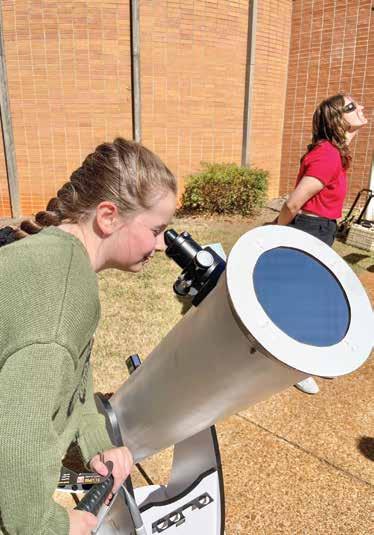
Stone photographs the total solar eclipse of 2024 in Lott, Texas.
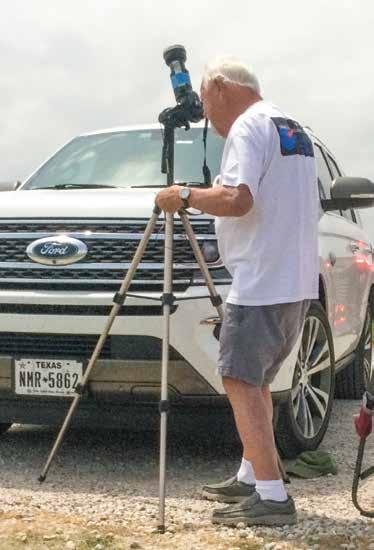
He also cited a love for the images sent back by the Webb space telescope. “We get phenomenal pictures back of stuff that’s way off, and it boggles the mind.”
He is active with the Shoals Astronomy Club.
“I credit him with getting me interested in space,” said RHS teacher Gabe Willis. “At West Elementary, he was the principal when I was there, and I remember him setting up a special telescope so we could all go out and see the eclipse. That had a big impact on me, and it’s something I’ll never forget. I’ve been fascinated with eclipses and other astronomical events ever since.”

Willis said Stone has also inspired him as a teacher. «He has so much wisdom,” Willis said. “He knows so much, including about geology and other related areas. He just has a wealth of knowledge, and I have a tremendous amount of respect for his opinion. He’s always been incredibly supportive of me in general, and he’s one of the biggest supporters of our rocketry program … He’s been over the top helpful with rocketry and just anytime I’ve needed him for anything as a teacher or a friend.”
Stone said he used to do “a little woodworking,” but he’s left that behind for other pursuits. Another of his activities is being involved with the Emmaus movement, a religious service group. He said he and his wife Ginger enjoy gardening together. They grow a lot of vegetables – among them, 72 tomato plants. “We give a lot of vegetables away,” he explained. “We just enjoy gardening.” Other vegetables they grow include onions, beans, squash and cucumbers. “We probably put up about 400 jars of food a year,” added Ginger, who handles the canning. “We have a huge pantry, and we love eating and sharing from it.”
When the couple were dating, they enjoyed watching meteor showers sitting on the hood of a car at 4 a.m. at the Bear Creek Lakes. They dated for five years and have been married for 24. “There’s not anybody else I want to spend my life with other than her,” he said. “We have a wonderful life.”
Together, the Stones have traveled broadly, visiting Alaska, Ireland, Maine and Florida. They are getting ready to go to Costa Rica soon. “Maine is wonderful,” Stone said. “It’s just beautiful up there. He said he doesn’t have a favorite of the places they’ve traveled. “Wherever we go, we like it.”








Stone said he enjoys the many friendships he has made over the years. Among them is Kelley Riley. “My wife (Judy) and I moved in next door to Rocky Stone 50 years ago,” Riley said, “and Rocky quickly became my best friend and has been so ever since. He has been there for us through thick and thin.

“You’ve heard the saying ‘jack of all trades, but master of none,” Riley continued, “but Rocky is indeed a jack of all trades but also a master of many. He is the only person I know who built a working laser, who can paddle a canoe as straight as that laser beam and who can sit around a campfire under a billion stars and quote, from memory, page after page of Robert Service poetry. He can also point out and tell you the names of many of the stars and planets.”
Riley said Stone was there for them through the birth of all three of their daughters and was a second father to them. “The same is true for all six of our grandsons, and they refer to him as Papa Rocky,” Riley added. “Rocky is the most selfless person I know. He’s a kind, loving and caring man, and there could be no better friend.”
“It’s just a good place to live,” Stone said of his love for his community. “People here are good, solid people, and it’s just a good place to live. I like the geography of this area, and the people here, by and large, are very kind.”
Bountiful gardens have you in the mood to get in the kitchen? Grab a mouthwatering cookbook to inspire your culinary journey. Northwest Shoals Community College library director Lori Skinner has these titles to recommend:
“Still We Rise: A Love Letter to the Southern Biscuit”
By Erika Council
Erika Council’s tribute to the biscuit, “Still We Rise: A Love Letter to the Southern Biscuit,” contains over 70 unique sweet and savory recipes for biscuits, spreads and sandwiches. This Epicurious and Garden and Gun Best Cookbook of the Year explores Black excellence, resilience and heritage in the American South. Be sure to pick this one up to check out her decadent recipe for Cinnamon Sugar and Pecan Biscuits.
“Treasure of Southern Baking”
By Cheryl Day
Tie on an apron and grab Cheryl Day’s “Treasure of Southern Baking” and whip up something delicious! Named a Best Cookbook by Eater, Food & Wine, Southern Living, Epicurious, Bon Appetit, Garden & Gun, Taste of Home and more, this book by one of the South’s most beloved bakers contains over 200 tried-and-true recipes for biscuits, fritters, muffins, scones, cookies, cakes, and pies.
By Kayla Butts
Maximize your garden’s bounty with Kayla Butts’ “Garden to Table Cookbook: A Guide to Preserving and Cooking What You Grow.” Use your homegrown produce in over 100 seasonal recipes for canning, jams, mains, desserts and more. This fantastic guide to utilizing garden produce includes recipes as well as sections on freezing, drying and canning garden produce.
By Carrie Morey
A fun cookbook full of recipes that are sure to be family favorites is “Hot Little Suppers: Simple Recipes to Feed Family and Friends” by Carrie Morey. Structured by seasons, this cookbook contains over 100 recipes and tips to involve kids in the kitchen, variations to meet dietary restrictions and tips for how to adapt to serve large crowds. This one is a must for busy families looking to add a little variety to their meal routines.

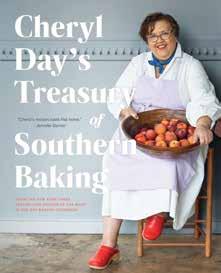


Lori Skinner is the head librarian for Northwest Shoals Community College. She can be contacted at 256-331-6288 or lori.skinner@nwscc.edu. NW-SCC Libraries are open to the public and look forward to serving your library needs. The library now has an app, Librista, available on android and Apple devices.
A June 8 car show at Sloss Lake served as a benefit as part of Scoliosis Awareness Month.
Photos by MARÍA CAMP






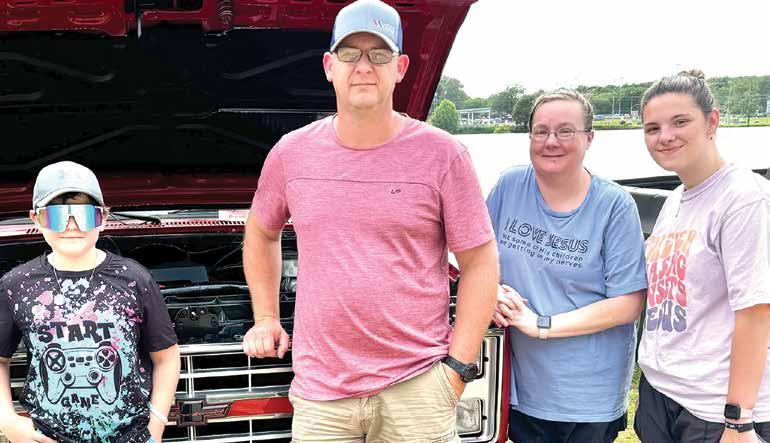






When it comes to the Extension System, regional agents can offer advice for tackling all kinds of issues. One of the issues facing home gardeners this summer is threatening knockout roses.
“I have gotten several calls about rose slugs and sawfly larvae affecting knockout roses in the last week or so,” explained Jayne F. Luetzow, a regional Extension agent for home grounds. “Knockouts are generally pretty pest free but are being affected by these guys.”

Knockout roses are a trademark variety first introduced about 20 years ago, cultivated by rose breeder Will Radler. They are marketed as an easy-to-grow shrub with a long season of blooms. “They can fit into any landscape in most climates,” asserts knockoutroses.com. “Plant them individually as a focal point, among other shrubs, or in large groups to create a colorful hedge. Incorporate perennials and annuals to create a season of color, texture and interest.” A range of colors are available, and the website shares advice on care, from planting and fertilizing to pruning and pests.
When it comes to pests, these roses “are not pest-resistant, but they are extremely tough so even if bugs get after them, they should be fine,” the website reassures. Rose slugs and sawfly larvae can, however, be a threat.
The Extension offers the following control recommendations:
1. Handpick or physically remove rose slugs or sawflies found on the plant, if infestation is not very bad. Tiny, green inchworm-looking critters are the culprit you’re looking for; check the undersides of leaves.
2. Prune out the damaged parts of the plant and throw them in the garbage. “Do not compost,” Luetzow warned. “It is


















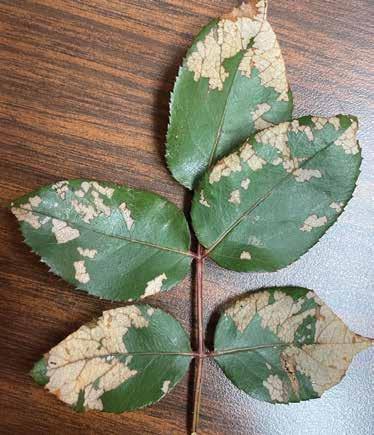
not the best time of year to prune; however, whenever you have a disease or pest, it is best to prune it out to help keep it from spreading.”
3. Use an insecticide. “Always read the label,” Luetzow said. “As a note, slug baits and BT (Bacillus thuringiensis) are ineffective against these guys.” Instead, the Extension recom-



careful, as carbaryl can be toxic to our pollinators,” Luetzow warned; or Cyfluthrin (Tempo).
Ultimately, the shrub website says knockout roses should be able to withstand any invasion by these pests. “Rose slugs will chew the leaves of plants, leaving trails where they’ve munched through, but they won’t be detrimental to the overall health of your Knock Out® Roses.”
For more advice from a local Extension agent, call



